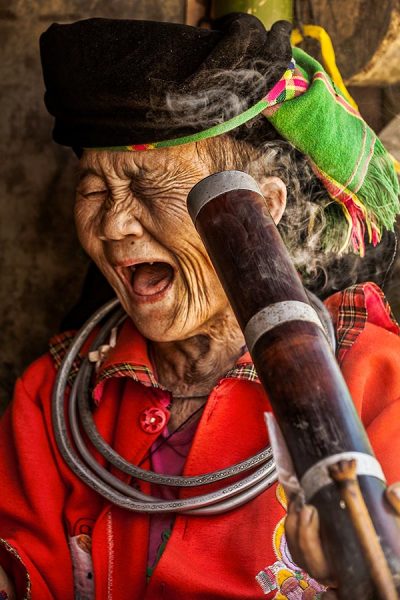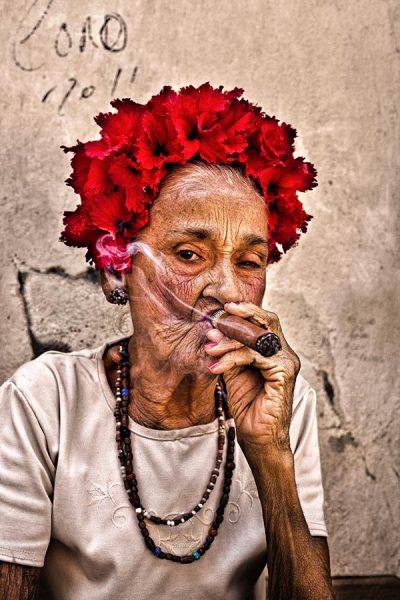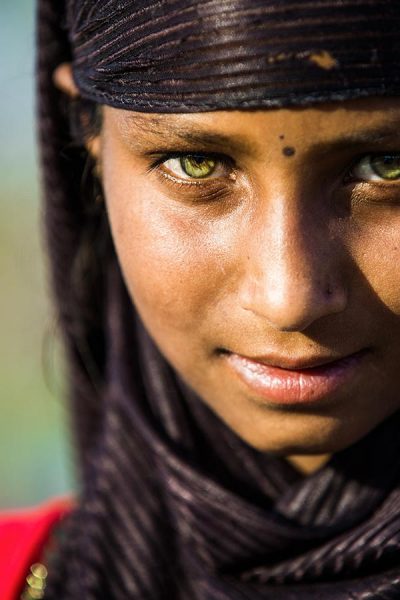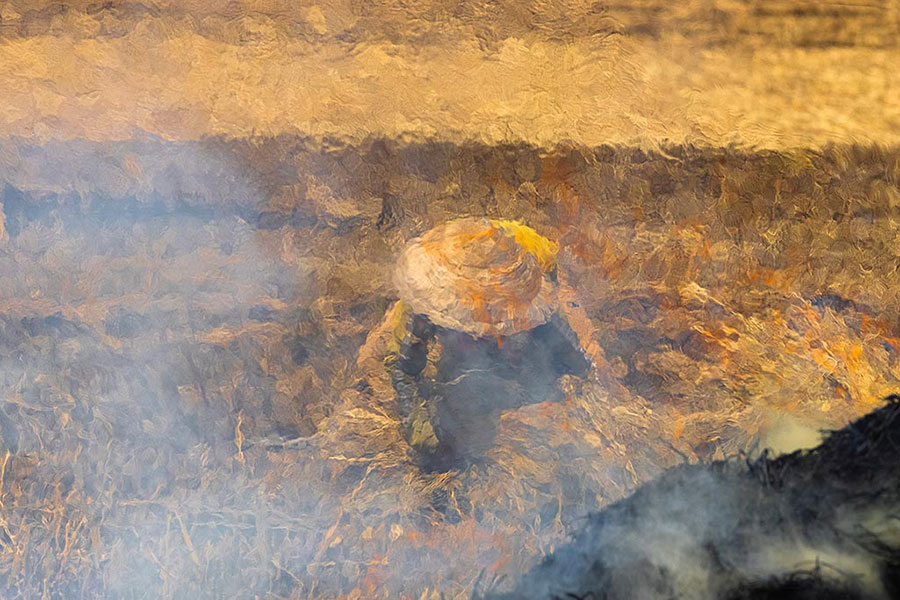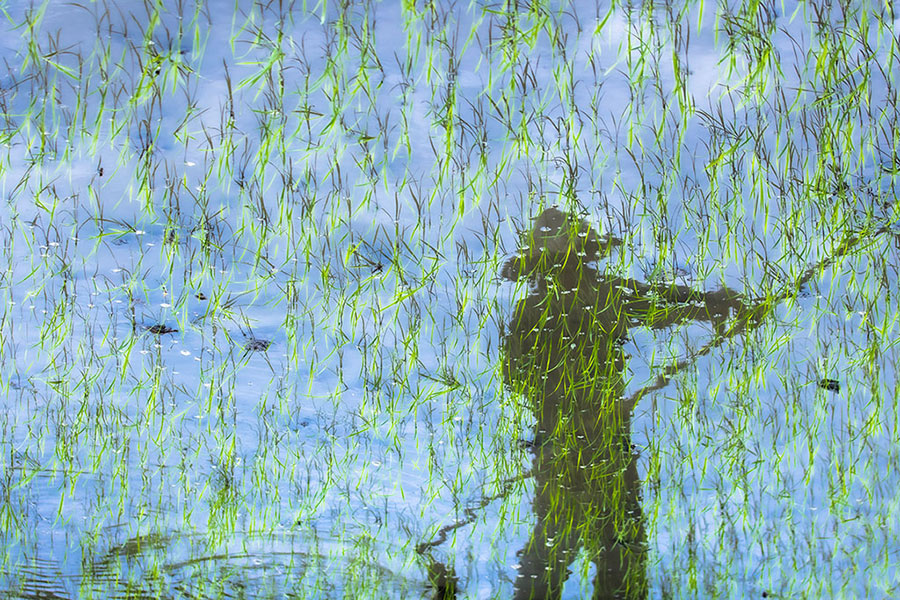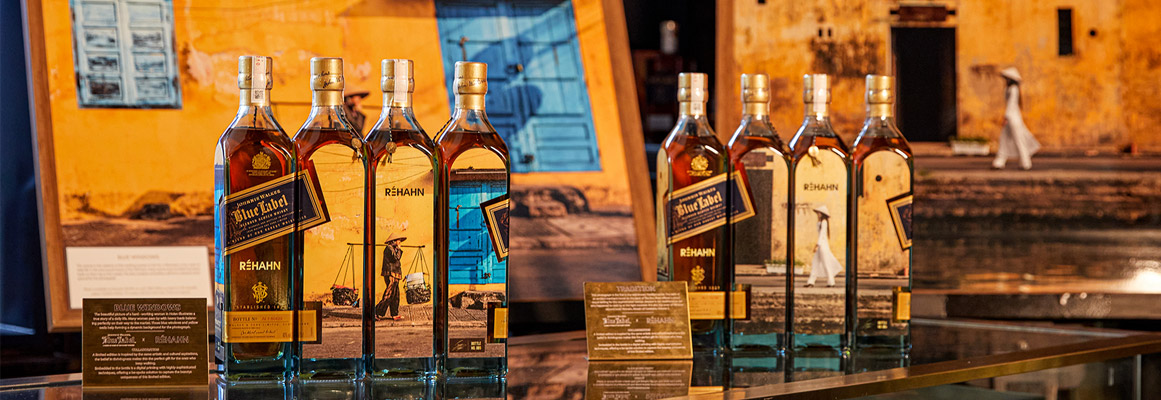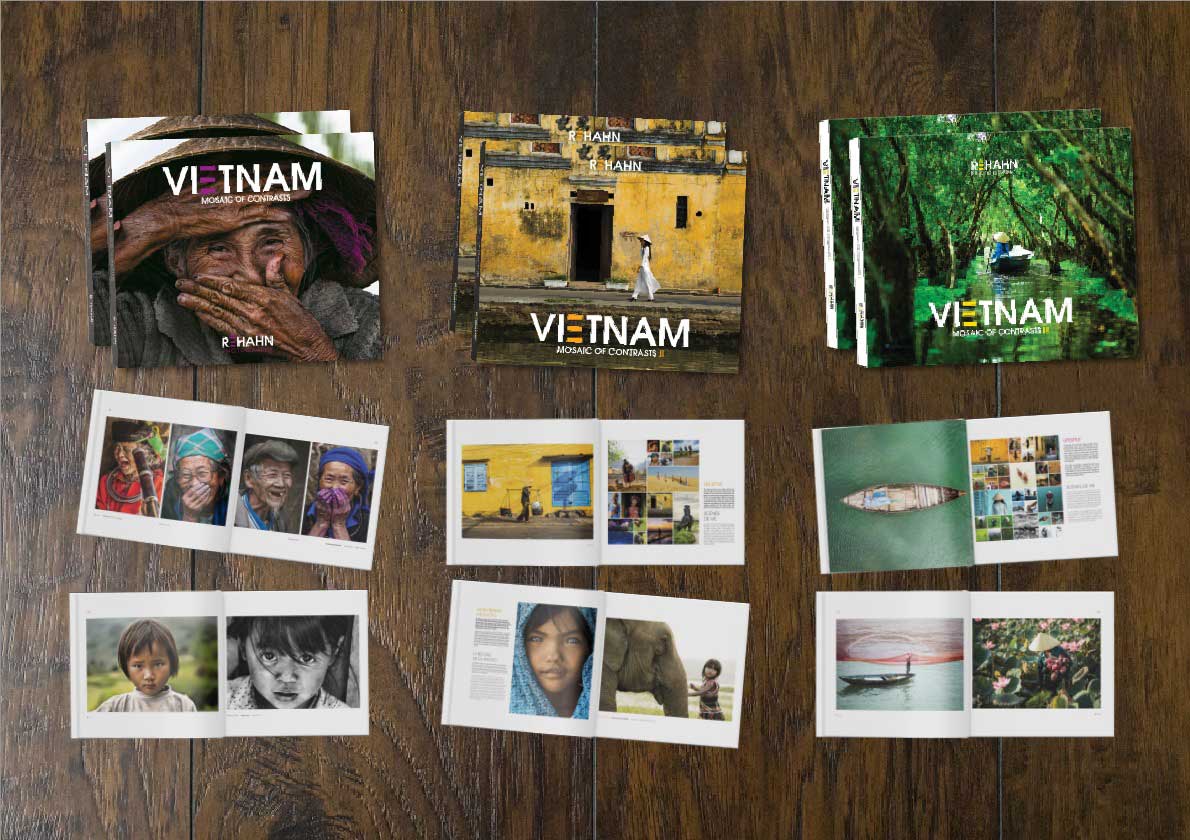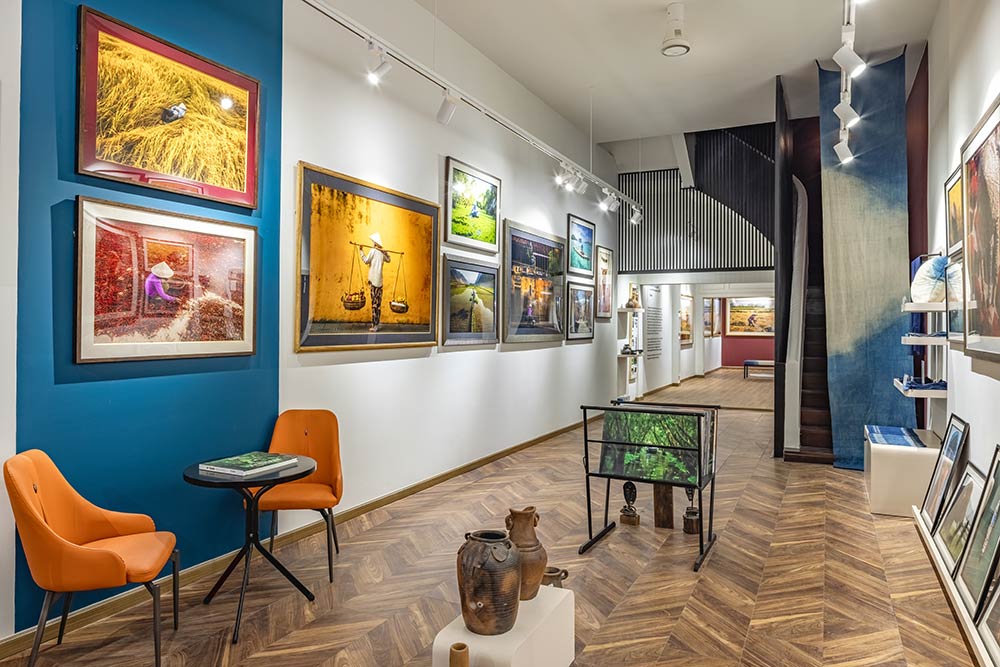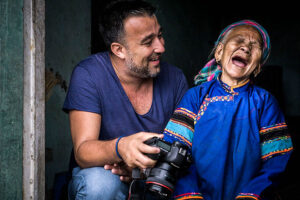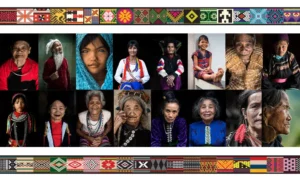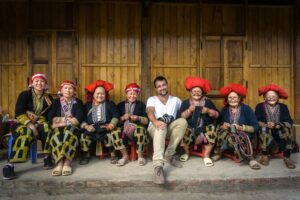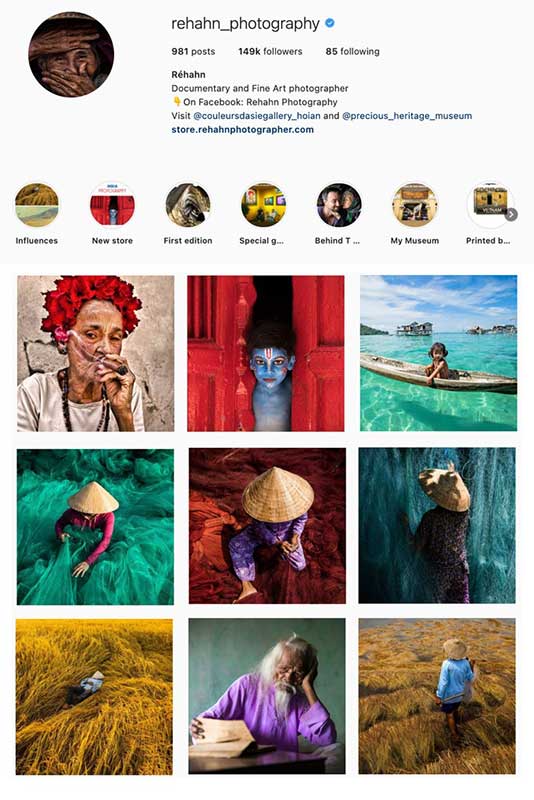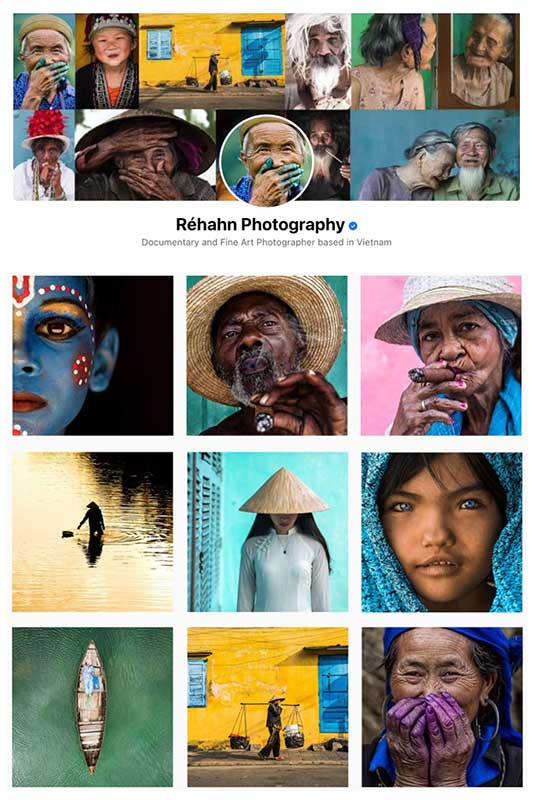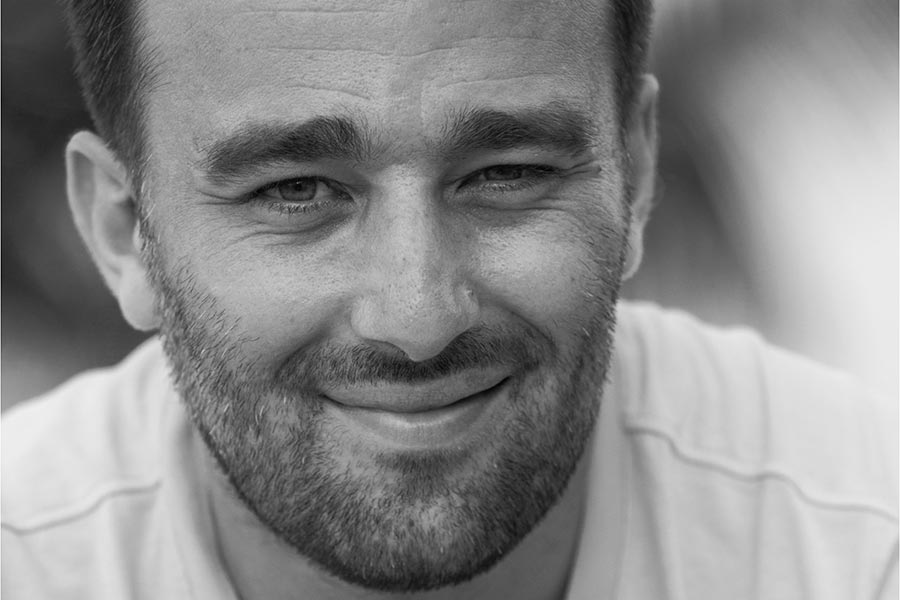
Biography
The artist – Art Periods
I’m inspired by humanity in all its forms. Photography is an excuse to get closer to people and to hear their stories. That’s how I got started as a photographer, simply meeting people and taking the time to talk to them.
— Réhahn
Early Life and Career
Réhahn was born in Bayeux in Normandy, France. An avid traveller, he voyaged to more than 35 countries with his camera before settling in the coastal town of Hoi An. Vietnam and its culture had inspired him since he visited for the first time while on a humanitarian mission with the French NGO Les Enfants du Vietnam.
Referred to as someone who “captures the souls of his models” (Wanderlust Travel Magazine, 2018), the French photographer is more than just a man behind a camera.
Behind each photograph is a story. Each image is the culmination of an experience. The stories of his subjects as well as his passion for learning more about their culture, diversity and changing traditions are what drives the artist’s work.
A good connection (and photograph) must start with respect. I always put my camera away and give my full attention to the person I’m meeting so that trust can build organically.
— Réhahn
The artist’s unique combination of Fine Art Photography and Documentary styles result in images that both inform and mesmerize. His portraits of Vietnam, Cuba and India are particularly well-known for precisely this reason. They take the viewer along on the voyage to catch a glimpse of authentic interactions with people. He captures their smiles, their wisdom, their daily lives.
The Start of Réhahn’s Career
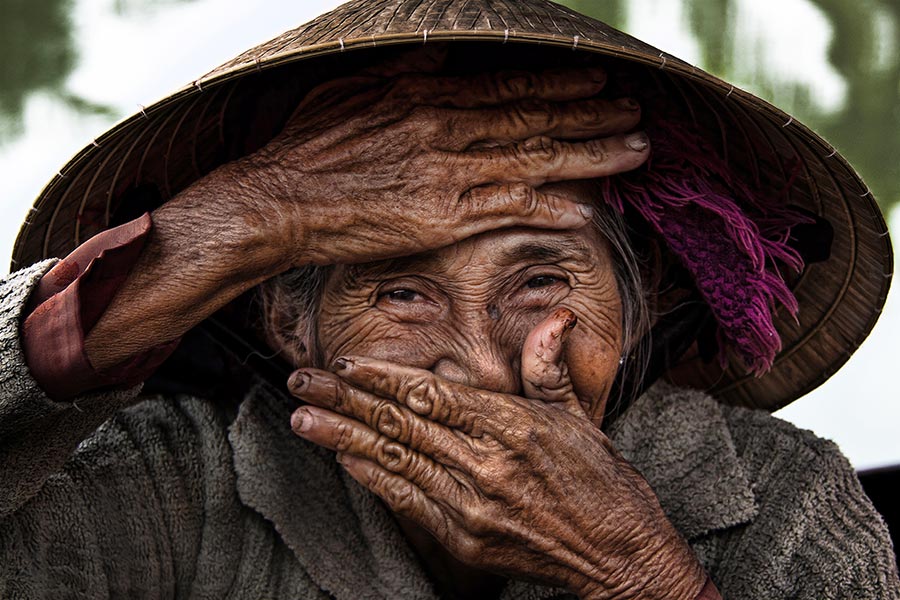
In 2011, the artist met the woman who would change the course of his life and career – Bui Thi Xong.
The 72-year-old tour boat captain had spent her entire life floating up and down the river in Hoi An. When he asked if he could take her photograph, she laughed and covered her mouth. The resulting image, “Hidden Smile”, became the most significant photograph in Réhahn’s career. It was published worldwide and eventually became one of the most iconic images of modern Vietnam.
More importantly for the photographer, the encounter started his lifelong friendship with Xong and inspired his Giving Back Project.
To me, this photograph is representative of the real Vietnam. It blends modesty and humor, old age and happiness. It encompasses the true spirit of the woman who has now become my muse - the unforgettable Madame Xong.
— Réhahn
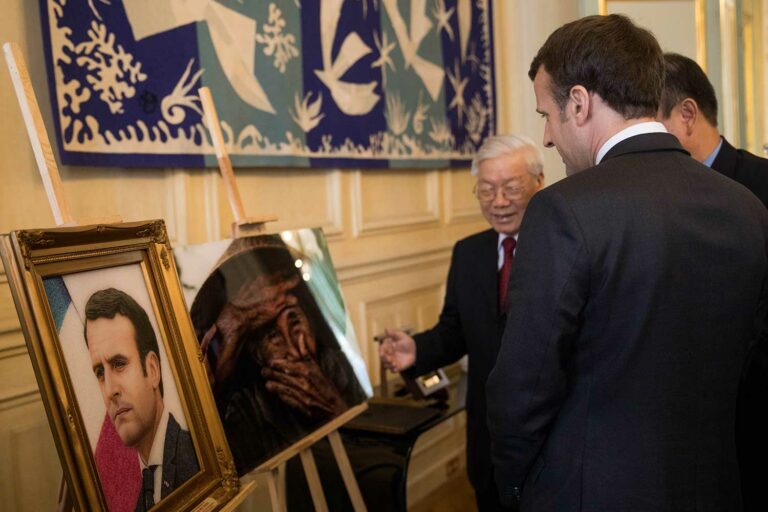
In 2015, the Asian House Museum in Havana, Cuba, chose “Hidden Smile” for its permanent collection. One year later, the Hanoi Women’s Museum added it to the permanent collection for International Women’s Day.
Vietnam’s Secretary of the Party, Nguyen Phu Trong (the current President of Vietnam), gave an Edition of “Hidden Smile” to French President Emmanuel Macron. This pinnacle moment occurred in 2018 during an official ceremony celebrating 45 years of friendship between France and Vietnam. (watch the vidéo of the ceremony)
This famous photograph even set a record when it became the most expensive photograph ever sold in Asia, after being purchased by a private collector for 150k (read the NY Weekly article)
Cultural Work
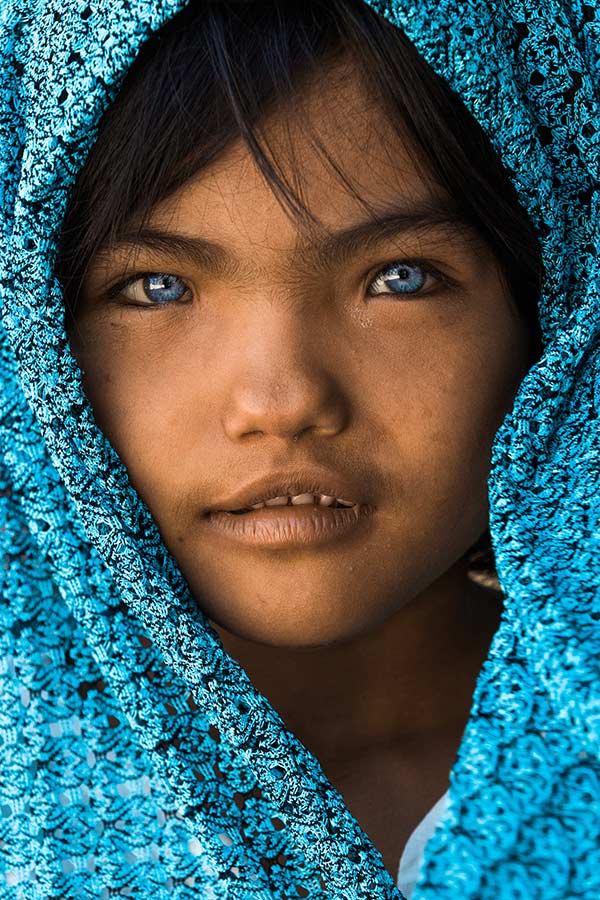
Réhahn has always believed that the key to a successful photograph is respect. Yet, it was his encounter with a little Cham girl with blue eyes that truly solidified this philosophy. When he met An Phuoc and her family in Central Vietnam in 2014, he knew that he would love to take her portrait. The family’s hesitation prompted the photographer to put away his camera and take time to build trust. The chance meeting became a story of inspiration and lifelong friendship between the photographer and An Phuoc’s family.
The key to a successful portrait has less to do with technique and more to do with having an authentic and meaningful connection with the subject.
— Réhahn
Featured on the covers of Globe-Trotters and Geo magazine in France as well as in international media such as National Geographic, BBC, Business Insider, and Independent UK, “An Phuoc” became one of the artist’s three most iconic photographs along with “Hidden Smile”
In 2016, “Échappées Belles”, a popular French travel program, followed along with Réhahn on a photographic voyage and introduced his work to his home nation. This event marked an important step in his career. His work has since become highly sought after amongst French and European Fine Art collectors.
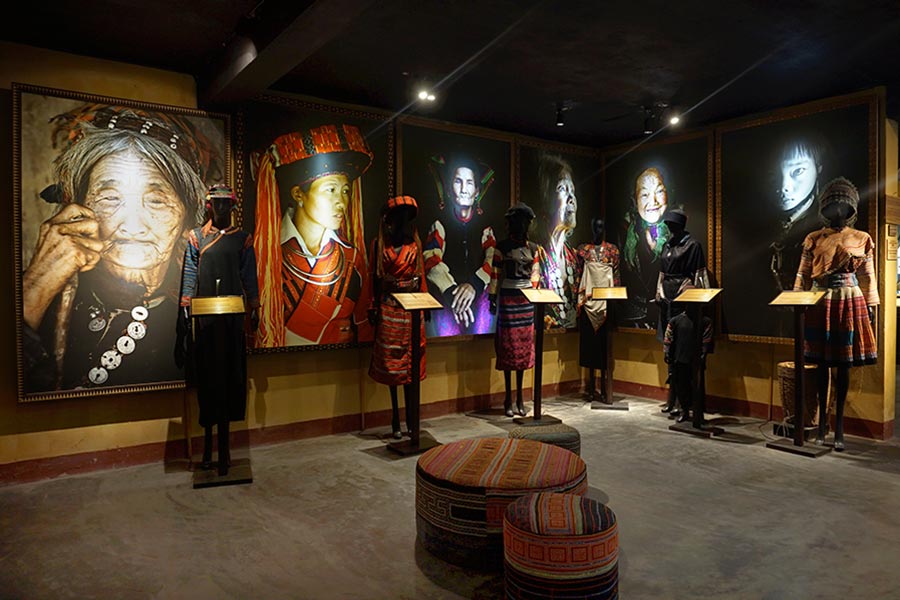
Réhahn’s work often blurs the lines between fine art and documentary photography. Armed with a continual curiosity about the world around him, he is always seeking the deeper story.
The Precious Heritage Project began as a way to seek information about the 54 diverse ethnicities present in Vietnam. It developed into a nearly decade long journey to research and document the cultural heritage, craftsmanship and stories of each tribe. The photographer completed his goal to meet all 54 groups (in addition to dozens of subgroups) in 2020..
Before coming to Vietnam, I couldn’t imagine a country where so many languages, traditions and separate cultural identities could exist side by side. The more I discovered about these tribal groups, the more I realised how fleeting heritage could be. I realised how important it is to try to keep some of this precious heritage alive.
— Réhahn
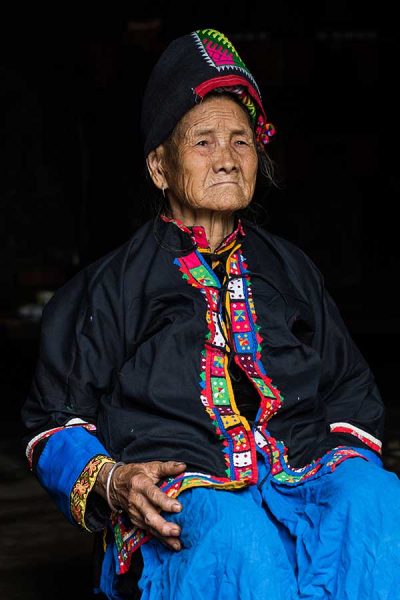
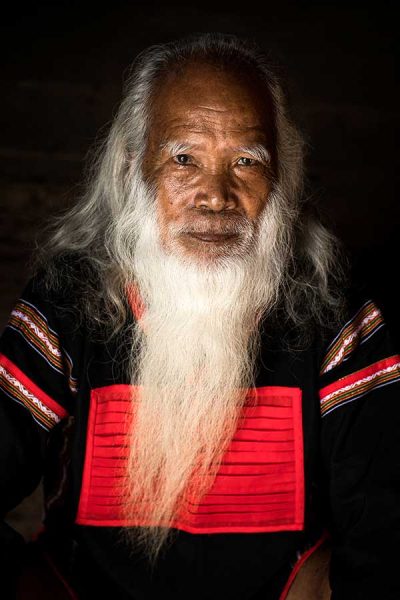
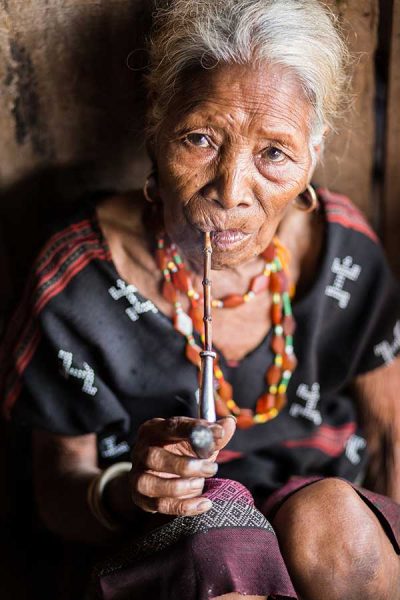
In 2017, the Precious Heritage Collection of portraits and traditional costumes found its permanent home in the artist’s Precious Heritage Museum. It is the only cultural museum of its kind in the world that presents information, photographs and artefacts of all of Vietnam’s ethnic groups. The collection in the Precious Heritage Museum located in the Ancient Town of Hoi An, a UNESCO World Heritage Site, consists of over 100 photographs, 62 traditional wardrobe ensembles and spans five rooms and 500sqm.
Most of the costumes were given to the artist by the chief of each village. The museum is entirely free to the public as a way to honor and share that gift.
Réhahn continues his mission to seek more information about undocumented subgroups to spread awareness about the diverse cultural identities of the people living in Vietnam.
New Work
After finishing his original mission for the Precious Heritage Project and Cultural Museum, Réhahn became interested in returning to his own cultural roots. His research brought him to the French countryside, specifically to Honfleur on the Normandy coast in France, where he spent time as a child and still owns a residence. Honfleur is known for being the birthplace of the Impressionist movement in painting.
The artist’s passion for nature, bright colors and light aligned with the desires of the Impressionists and Post-Impressionists to try to capture the changing colors and emotions that arise with the changes of light and seasons. Despite its distance from France, Vietnam shared some of the idyllic rural scenes that so inspired certain 19th-century painters such as Monet, Pissaro and Van Gogh.
IMPRESSIONISM IN PHOTOGRAPHY
Réhahn sought to reimagine the initial influences of the Impressionists, but in a contemporary way. Light is an essential tool for all photographers, finding a way to use it in a completely original style was the challenge. The artist created methods to merge the fields of Fine Art painting and photography in a new medium – Impressionist Photography.
Refusing to use filters or any other artifice for the retouching of his images, he decided to use nature itself to give his work an impressionistic aspect which, under the right conditions, can almost appear to have the texture of paint.
The use of reflections (a constant source of inspiration for Monet), the distortion of a scene through the heat of a fire, or even through drops of falling rain, are necessary effects for the creation of these artistic works. They also use the bright complimentary colors and pastoral scenes that filled the oeuvres of painters such as Van Gogh and Pissaro.
Beyond light and color, Impressionist painters were also strongly influenced by the compositions in traditional Japanese art forms. Artists like Degas redefined the balanced composition, which was formerly so dear to the West. Some critics saw these new layouts on the canvas as failed pictorial attempts; but art historians quickly understood the intention, their sources of inspiration as well as the beauty of off-center paintings, intense flat colors, and even the use of empty space.
Réhahn’s Impressionist series of Fine Art photographs, which use some of these principles, have become instant bestsellers with the Limited Edition series being acquired in record-setting times.
Artistic Collaborations
Recent collaborations with well-known brands have brought the artist’s photographs to a new audience. In 2017, iconic fashion brand Louis Vuitton chose a Limited Edition copy of Into the Sky for the decor of their flagship Saigon store.
This bestselling photograph of a man asleep in a boat on emerald waters was also chosen by the world renowned Scotch Whisky brand Johnnie Walker for the final label of their 2022 Blue Label bottles. The brand also used four other works to create a full series of Limited Edition collector’s items. Into the Wave, Tradition, Blue Windows, and Resting Gold are each spread across four bottles to create the effect of panel artwork, each piece completing a part of the final work.
In 2023, Elie Bleu, a French artisan house specializing in cigar humidors, watches, games, pens and jewelry boxes, has created a custom humidor in collaboration with Réhahn. The custom lacquered box features the artist’s bestselling portrait Elva.
A Publisher of Fine Art
“Hidden Smile” graced the cover of Réhahn’s first book “Vietnam, Mosaic of Contrasts Volume I” in 2014. Curated from 27,000 photographs of Vietnam, the book became a bestseller and sold in more than 29 countries.
Following the book’s success, the photographer released Volumes II and III of “Vietnam, Mosaic of Contrasts” in 2015 and 2020. Each bestselling book showcases the diverse landscapes, lifestyles and cultures of Vietnam.
In addition to this series, he released two coffee-table editions. “The Collection, 10 Years of Photography” (2018) and “100 Iconic Portraits” (2019) showcase his photographic work in Cuba, Malaysia, South and Central America, and the Indian subcontinent in addition to Vietnam.
Fine Art Galleries in Vietnam
Réhahn’s Fine Art Photography collections are exhibited at his three galleries located in Hoi An and in District One in Ho Chi Minh City.
At home, the artist divides his time between his photographic and humanitarian work and his passion for collecting books.

